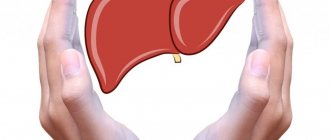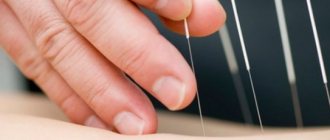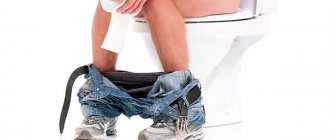Colic in newborns is a physiological process, characterized by pain in the abdominal area, mainly up to the age of 3 months. The cause of pain (colic) in the intestines in newborns is not fully understood, but the most common belief is that this is due to the growth of the intestines. People come up with many ways to somehow help a child during painful periods, but not everyone is helped by the same thing. There are babies for whom nothing helps at all; in such cases, colic just needs to be overcome.
But mother’s colic also includes pain in the child, which appears as a result of the accumulation and difficult passage of gases from the intestines, as well as due to constipation. Despite the fact that colic, gas, constipation are all different concepts, we will touch on all these topics in this article, because they all provoke abdominal pain in a child. Massage for constipation, gas, colic in newborns has much in common, but there are small differences that improve the effectiveness of the procedure in each specific case.
Preparing for a massage
For the procedure to be not only useful, but also enjoyable, you need to prepare for it in advance3.
- The massage is carried out in a clean, well-ventilated room, where there are no drafts, and the temperature is comfortable for children with imperfect thermoregulation - approximately 20-24 degrees.
- The baby should lie on a flat, fairly hard surface. A changing table is perfect.
- It is advisable to dim bright lights and remove all distracting objects.
- The baby should not be hungry or too full.
- If you have any ailment - a cold, teething, fever, skin rashes or allergies - it is better to postpone the massage.
- Prepare in advance the things you will wear for your baby after the procedure.
Why give a restorative massage to a child?
Baby massage consists of rubbing, kneading and stroking his arms, legs, neck, back, and abdomen.
If you massage your child correctly, it can correct many health problems. Good massage:
- improves digestion and relieves colic;
- makes sleep longer and more restful;
- normalizes the functioning of the nervous system;
- tones muscles, develops coordination of movements;
- stimulates metabolism;
- increases immunity.
When is the best time to massage your baby?
The time of massage affects its effectiveness and therapeutic effect. Choose a moment when your baby is calm and positive. Perform a massage 1 hour before or 1-2 hours after feeding4,5.
You can do small sessions of 5-7 minutes 3-4 times a day. In the future, as the baby grows, you can gradually increase the time to 20 minutes. For example, a massage for constipation in a 3-month-old baby will take 15 minutes.
Don’t be upset if your child doesn’t really like the massage movements at first. This is due to the high sensitivity of the receptors and the thinness of the skin of infants. Very soon he will get used to it and begin to enjoy it. In infant massage, regularity and a positive attitude of all participants are important2,5.
Reasons for violations
Normally, in a child up to 6 months of age, the process of defecation occurs up to 8 times a day, after six months of life - from 1 to 3 times a day. Of course, these numbers are individual, so it’s worth focusing on something else. For example, doctors recommend paying attention to the consistency of the stool and the child’s well-being. If the baby cries often, the stool is too runny or is completely absent for several days, then this should alert you.
Unfortunately, constipation in babies is far from uncommon. And usually they are functional (that is, acquired) in nature. This problem may be a consequence of a lack of milk or an improper diet of the mother , as it significantly affects the feeding process. In addition, the causes of problems with digestion and the functioning of the gastrointestinal tract are:
- Transferring the child to artificial formula, a sudden change in diet.
- Violation of the drinking regime.
- Allergic reactions to milk components.
- Problems with the thyroid gland.
- Deficiency of iron and a number of microelements.
- Immaturity of the child's gastrointestinal system.
- Dysbacteriosis.
- Lactase deficiency, the enzyme that breaks down lactose.
- Disturbances in the functioning of the central nervous system.
Also, constipation in 10% of cases can be organic (congenital) in nature. In this case, the problem appears from the first days of life. This is due to the presence of various anomalies in the development of organs. We are talking about the following:
- Narrowing or lengthening of the intestines.
- Rickets (lack of vitamins D).
- Down's disease.
- Hypothyroidism.
- Cystic fibrosis.
- Birth injuries.
- Gallbladder pathologies.
In many infants, constipation develops against the background of transient dysbacteriosis. This is due to an insufficient amount of beneficial microflora - it is the microflora that is responsible for the production of substances that stimulate intestinal function. Almost always, this condition is accompanied by bloating, an allergic rash and frequent regurgitation.
Photo: Yandex.Pictures
General recommendations2,3
If your baby is constipated, massage your abdomen with clean, warm hands. You can use a small amount of massage oil or gel suitable for children in the first year of life3.
Be gentle with the liver area.
Avoid touching the genitals and lymph nodes.
Perform the movements with light, stroking movements.
- Avoid strong pressure and sudden movements to avoid causing harm.
- Talk to your child while doing the exercises, smile at him, sing songs.
- Start and end the procedure by stroking your tummy.
- Repeat each exercise 2-5 times.
How to recognize colic and constipation
The main signs of constipation in a baby are the absence of bowel movements for several days, bloating, passing gas, as well as constant crying and restlessness. In addition, this condition is accompanied by intestinal colic. This is a sharp, cramping pain that is caused by the accumulation of gases in various parts of the intestines. The following symptoms indicate the appearance of colic:
- Constant crying of the child, arching of the back and pressing of the arms to the stomach.
- Facial redness.
- Hard and swollen abdomen.
- Bend your knees and pull them towards your stomach.
In rare cases, the condition is accompanied by fever and even vomiting. This is explained by “self-poisoning” of the body. Such symptoms are very alarming, as vomiting can cause dehydration. Therefore, it is extremely important to take urgent measures to eliminate existing problems.
In some cases, massage will help a newborn with constipation and colic. However, this measure is effective and safe only in the early stages after the problem appears. In general, in such cases, you should not engage in amateur activities or hope for an independent solution to the problem. You should immediately consult a doctor to find out when it is best to perform a massage and whether the use of drug therapy is required.
Execution technique 2.6
- Circular stroking movements of the abdomen, clockwise.
- Stroking movements of the oblique abdominal muscles from the edge to the center.
- Acupressure of the umbilical area of the abdomen with the pad of the index finger in a clockwise direction.
- Acupressure of the rectus abdominis muscles with the pad of the index finger in a clockwise direction.
- Finish the massage with relaxing belly rubs.
Sometimes massage alone for constipation in newborns is not enough. To normalize stool and bowel function, you can try Duphalac®. This is a mild laxative with a dual mechanism of action: it simultaneously gently cleanses the intestines and normalizes the balance of its microflora due to its prebiotic effect7. The preparation contains lactulose, which, when broken down in the large intestine, helps to establish its natural cleansing and at the same time stimulates the growth of beneficial bifidobacteria and lactobacilli7.
Duphalac® is approved for children from birth and can be used for as long as treatment requires7,8.
Co-author of articles, editor - Shimbaretsky Georgy Alekseevich.
Massage for newborns. 12 methods, or how to counteract colic
The baby’s digestive system is very vulnerable - it is just “learning” to function independently. Therefore, in the vast majority of cases, colic is a natural phenomenon that does not require special medical intervention. However, it is entirely in your hands to alleviate the child’s condition.
Step 1
The first time a newborn is put to the breast is always quite difficult. To stimulate the baby before feeding or directly during feeding, massage the baby's back from top to bottom through the clothes with the whole palm.
Then lightly move along the edge of the ear with the tips of two fingers and lightly rub the edge of the mouth. Such actions excite the sucking reflex. During feeding, lightly touch the ear and lower jaw, making stroking movements. This will keep your baby awake and encourage him to suck more vigorously.
To minimize the “chaotic” movements of the arms with which the baby pushes away the breast, trying to put his fist in his mouth, gently place one arm under the breast, and gently hold the other. This position will have a calming effect on the child. However, if the child is active and does not respond to your actions, do not use force. Better try next time.
Step 2
A newborn baby is too sensitive, so limit yourself to a minimum of movements. Your warm hands placed on your tummy for a few minutes will start the processes by stimulating two important organs for digestion - the liver and gall bladder - big lovers of heat.
Step 3
Now we will make the well-known “bicycle”. Only your movements should be smooth and careful. We bend and unbend the baby’s legs one by one. Children usually enjoy these games, but if the baby resists and starts crying, change the pace to a slower one and act more gently. If the protest continues, postpone the lesson until next time.
Step 4
Panther on a tree pose can help relieve cramps. So, we place the baby’s head to the elbow, holding the butt and stroking the back. This position of the body, together with physical contact, normalizes the digestive process.
Step 5
This is probably the very first step and a very simple solution that is either ignored or forgotten about. Infants have abdominal breathing, which is the main natural massage for the digestive tract. A tight diaper creates an obstacle to this process, prevents the legs from bending, which disrupts the natural processes in the intestines. Try not to pull the diaper too tight, and for the same reason, in the future, watch the belt on your clothes - it should not be too tight.
Step 6
The legs, pressed against the tummy, create pressure on the intestines, which improves and speeds up the digestive process. Turn your baby to face you, bend his knees as high as possible and press him to your stomach. Holding the baby's back with one hand and the other under the legs, gently stroke the lower part of the back with your palm in a circular motion.
Step 7
For babies 2–4 months old, the following massage methods can be used.
To speed up and facilitate the work of the digestive organs (contraindicated only in cases of pronounced diarrhea!), we do the same as for newborns. It is only important to remember that in one “session” you should not use more than two different exercises and types of massage, otherwise you only risk harming the baby instead of helping.
Step 8
Abdominal massage with rotation
The baby lies on his back directly in front of you, bend his legs a little and turn him slightly to the right.
We move our hand diagonally from the top of the back to the bottom of the tummy, starting from the right side. With one hand you hold your knees, and with the other we make massage movements at waist level on the left side.
We return the baby’s body to the “soldier” pose and make general stroking movements, starting from the chest and ending with the toes, circling the pelvis.
Then we repeat the turns, but in the other direction - knees to the left of ourselves, stroking the right side. And then we return it to the upright position again, stroking the entire body.
Step 9
Gut in focus
With the tips of two fingers, with both hands, barely touching the skin, we “follow” the intestines. We start in the lower left part, gradually moving up. Under the ribs we “turn” from left to right, going across and going down along the descending part of the intestine.
Step 10
And again the familiar “bicycle”. With older children, you can play this game more actively, but provided that this does not cause protest. With smooth movements, we stretch one leg forward, pressing the second one to the stomach, alternately changing the position of the legs. We move slowly, without effort.
Step 11
Massage on a mattress (or other surface suitable for massage) - the child lies on his back facing you, we “fold” the legs on his stomach into a ball and lightly rock the baby left and right.
Step 12
A 4-month-old baby who confidently holds his head can be placed in the “Buddha” pose. With your back to you, bending his feet with your hands under his tummy. Make light swings to the right and left with your child.
Choosing a medicine for colic in a newborn
Choosing the best product for a newborn is very difficult. Pharmacy counters offer a wide range of emergency medications for infant colic.
These can be herbal-based drugs, based on dimethicone or simethicone, antispasmodics, probiotics, enterosorbents. Some are used for prevention, others directly relieve pain.
It is difficult to say which one is suitable for a particular child. Each organism is individual. To make it easier to make a choice, let's consider the features of the most popular medications.
Herbal preparations
The drug should be given before each feeding
The plant base indicates the safety and naturalness of the raw materials. These are fennel fruits, cumin, anise, mint, chamomile. They are brewed and given to the baby. You can buy a ready-made carminative.
The most popular drugs are:
Does a mother's constipation affect her breastfeeding baby?
Errors in the nutrition of a nursing woman can affect the baby’s digestion. To relieve a baby from constipation, his mother will have to reconsider her menu. What dietary disorders can cause constipation?
- lack of water: if the mother drinks little, then where does the body get liquid to produce milk?
- excess foods with a fixing effect: rice, pasta, pastries, white bread, strong tea and coffee;
- lots of milk and dairy products. Constipation may result from intolerance or allergy to cow's milk protein, the most common type of allergy in the first year of life.
- There is little fiber in a woman's diet.
Indications and contraindications
The most common indication for tummy massage is the presence of colic. They can be caused by various reasons, most often by an incompetent digestive system and a lack of enzymes.
Massage is also used to prevent pain, colic, and constipation. However, the technique may vary in each case, so it is necessary to obtain specialist advice.
Do the exercises 30-40 minutes after eating, but not earlier, otherwise it may worsen digestion. The procedure is done up to 5-6 times a day.
A tummy massage can be dangerous and harmful if done if you have the following diseases:
- constipation – before the procedure the child must be examined by a doctor;
- increased sensitivity of the skin, rapid appearance of abrasions and bruises;
- bloody impurities in the stool;
- fever, chills, high temperature;
- the presence of an umbilical wound;
- umbilical hernia.
It is forbidden to massage if you have an unevenly swollen abdomen - this may be a sign of intestinal obstruction.
Constipation due to rotavirus infection
Mothers are more likely to associate diarrhea with rotavirus infection than constipation. But rotavirus causes inflammation in the intestines and disrupts its functions during illness, so constipation with rotavirus infection is quite possible:
- a sick child eats little, and when vomiting, he loses both fluid and the small amount of food that he was able to eat;
- an increase in temperature causes a large loss of moisture, liquid can be absorbed into the body, including from feces, thickening them;
- The work of digestive enzymes during illness is disrupted, and the number of “harmful” (pathogenic and opportunistic) bacteria increases, because of this, intestinal motility may slow down.
After the procedure
In most cases, immediately after exposure to the tummy, the baby begins to defecate, and gases are intensely released. To do this, you need to lay an oilcloth and a disposable diaper under the baby’s buttocks, or on the entire changing table. You can leave the baby in a diaper for a while after the massage.
To consolidate the massage effect, it is necessary to perform soothing movements. They are done from left to right, then they turn the baby onto his stomach and massage his back. The total duration of the procedure is no more than 20 minutes.
Then you need to let the child rest for 15-20 minutes so that the effect is not wasted.
Massage for bloating, gas, colic and constipation is a more preferable remedy than medications. Its regular implementation is beneficial for digestion and muscle structures. During the procedure, the abdominal wall, back muscles and even legs are strengthened.








